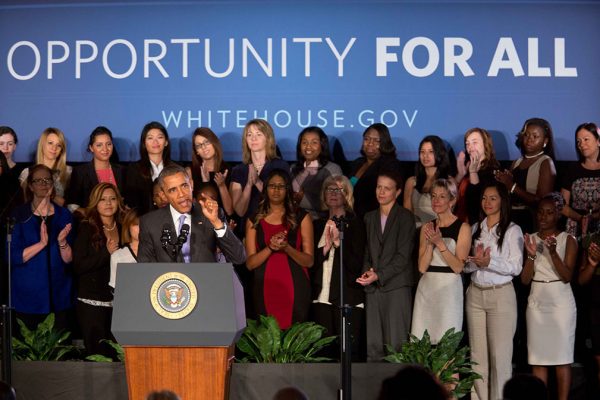We are grateful for these thoughtful and lively responses. While ranging widely, they all share our conviction that the recent evolution of the Democratic Party is of pressing importance. Many issues deserve attention, but we must be selective. We address two critical issues: the reasons for the Democrats’ particular pivot and the possibilities for developing a successful progressive economic formula.
First, however, some respondents question whether the Democrats’ transformation truly presents a puzzle. Heather Gautney argues that there is no puzzle because the Biden administration did not actually embrace more progressive economic stances. None of the other respondents agree. In dismissing the administration’s broad ambitions—which, as we noted, drew heavily on agreements made with the Sanders campaign in 2020—Gautney says she “thinks” Biden never intended these policies to become law. She provides no evidence for this claim, and it is clearly refuted by the most careful and well-positioned reporting at the time (for example, Franklin Foer’s recent book, The Last Politician: Inside Joe Biden’s White House and the Struggle for America’s Future).
Larry Bartels argues that there is no puzzle because Democrats are not divided along class lines on economic issues. We agree that these divisions can be exaggerated—a point we explored in our piece. And we stress that divisions are likely to be muted if Democrats carefully curate their proposals. Bartels’s evidence that the Biden agenda was popular among all income groups suggests successful curation. It does not prove that there aren’t underlying tensions within the Democratic coalition.
We think Bartels is too credulous in accepting survey results that show unwavering cross-class support on many economic issues. Many of these surveys frame questions in ways that don’t highlight tradeoffs (such as who is going to have to pay) that would become extremely salient if these proposals actually were intensively debated or enacted. A recent paper by our coauthor Sam Zacher provides convincing evidence that high-income Democratic voters often defect in large numbers when they think they are the ones who are going to pay for progressive economic reforms—most notably, when they are asked to pay more by state ballot initiatives. This kind of real-world evidence may not catch the eye of pollsters (and those who rely exclusively on surveys), but it matters for politicians whose careers depend on what voters do rather than what they say in surveys.
Other responses agree that there is a puzzling dimension to the party’s leftward movement on economics, and they mostly like the (complex) answer we provide. Bryce Covert, as well as Ted Fertik and Tim Sahay, want more analysis of ideational change among party elites. The latter make a sweeping claim about the perceived crisis driving the behavior of what they seem to regard as a sort of state managerial class. (In this context, Fertik and Sahay chide us for not discussing the American Rescue Plan, which they see as the clearest evidence of a new economic paradigm. While we would have discussed the ARP if we’d had more space, we actually see BBB and the other laws we discuss as more telling. These are the places where Democrats sought permanent policy changes and shifted from the stimulus-focused deficit finance of the ARP to we’ll-pay-for-it policy designs.)
We agree that it is important to understand ideational change in the party. As we argued, the story must highlight the positioning and actions of progressive groups and candidates, not just managerial elites. But it is also essential to account for the evolving structure of incentives for politicians who must win and hold office to make policy. That changing context includes pressure from the left, formidable electoral constraints in a system biased against metro areas, inevitable conflicts within the party’s broad and diverse electoral coalition, and new opportunities emerging from popular demands. In short, we need to understand why elites have room to pursue a particular agenda as well as why they come to see it as desirable.
In explaining this running room, we accept Lily Geismer’s important observation that we should have paid closer attention to the consequences of Donald Trump’s rise for building cross-class solidarity and tolerance of more progressive economics among Democrats. She’s right: alarm about the contemporary Republican Party has encouraged affluent suburbanites to realign, giving Democrats more room to run on a variety of issues—a permission slip, if you will. Still, a permission slip is not a blank check. Geismer goes way too far in saying that suburban voters are now so captured by the party that it no longer needs to appeal to them. For reasons we explained—above all, the density tax—these voters are critical to the party’s electoral prospects.
We thus reiterate a central point that the responses generally gloss over: elite agenda control can be a critical factor in determining what can get done. We agree with Bartels (and always have): voter opinions are only a fairly modest part of what matters. If a party’s leadership remains cohesive, voters’ opinions will give them some room to run. It is other features of the political system, like the skew of the Senate toward low-population states, that may be the greater source of constraint.
Finally, what about the implications of our analysis for mapping a road forward? Again, many respondents say too little about political constraints. Constructive assessments have to resist the understandable tendency to assert that what we find desirable must be popular and possible (it often isn’t) or to assume that trade-offs don’t have to be made because all good things go together (they often don’t). Gautney, for instance, laments the turn away from Medicare for All without giving any reason to think a 50-50 Senate (or even a larger Democratic majority) could pass anything of the kind. Bartels, likewise, is too sanguine about tensions around economic issues within the electorate.
Other responses highlight challenges that we agree are substantial and require careful thought. We are impressed by Jared Abbott’s analysis of Democratic messaging. To be sure, he is looking at a period—late 2022—when the shift from economic appeals makes some sense given the Manchin-induced shrinking of BBB, the Dobbs decision, and the pervasiveness of economic pessimism. Still, he rightly notes that Democrats have failed to find a formula for conveying a (curated) progressive economic agenda to voters. Especially given the party’s badly damaged reputation among white working-class voters, more populist language and candidates are likely to be required.
We also agree with Abbott that even high-profile “distancing” from controversial cultural issues is not likely to break through in today’s lopsided media environment, with an aggressive right wing and a mainstream that hopes for partisan equivalence. The Democratic Party is a large and heterogeneous organization, with lots of discordant voices, and it will always be easy for conservatives to find the most discordant. That does not obviate the valuable work of strategists like Abbott. Nor does it make irrelevant the curation and presentation of party priorities to emphasize unifying themes and reduce the risk of alienating persuadable voters.
But messaging must be coupled with action. We agree with Dorian Warren and Thomas Ogorzalek on the difficulties of building power through policy in today’s polarized political climate—a point we actually made in our essay. But this doesn’t mean Democrats shouldn’t try. There are few better options, and in a closely divided polity, even modest gains in public support could be decisive. As Representative Ro Khanna reminds us, there is no substitute for making tangible progress on matters that can help people lead more fulfilling lives. A common thread across multiple responses is the potential promise of action on the care economy. (Here is a place, contrary to Warren and Ogorzalek’s emphasis on predistribution, where the Democrats were firmly redistributive.) On this front, Biden and Congressional Democrats—for the first time in U.S. history—came very close to reforms that would have really made a difference.
The long-term challenge is organizational—how to build a stronger, deeper party with more capacity to reach and mobilize voters directly in the places where they live and work. Democrats’ recent emphasis on strengthening organized labor (which Warren and Ogorzalek rightly say that we could have discussed more) and on predistributive policy for revitalizing hard-hit communities suggests a salutary shift toward more intensive local organizing.
Khanna puts it powerfully: Democrats will thrive to the extent that voters “are convinced that we share their commitment to seek transformative change, will continue to fight for it with everything we have, and will not lick our wounds and default to a small-ball politics of normalcy that has failed the American working and middle class for decades.” That convincing and commitment will only happen with ground-level organization that connects voters even when the klieg lights of campaigns are off. We are grateful to the responses for helping us to think through how a forward-thinking Democratic Party could build that connection.
Boston Review is nonprofit and relies on reader funding. To support work like this, please donate here.








